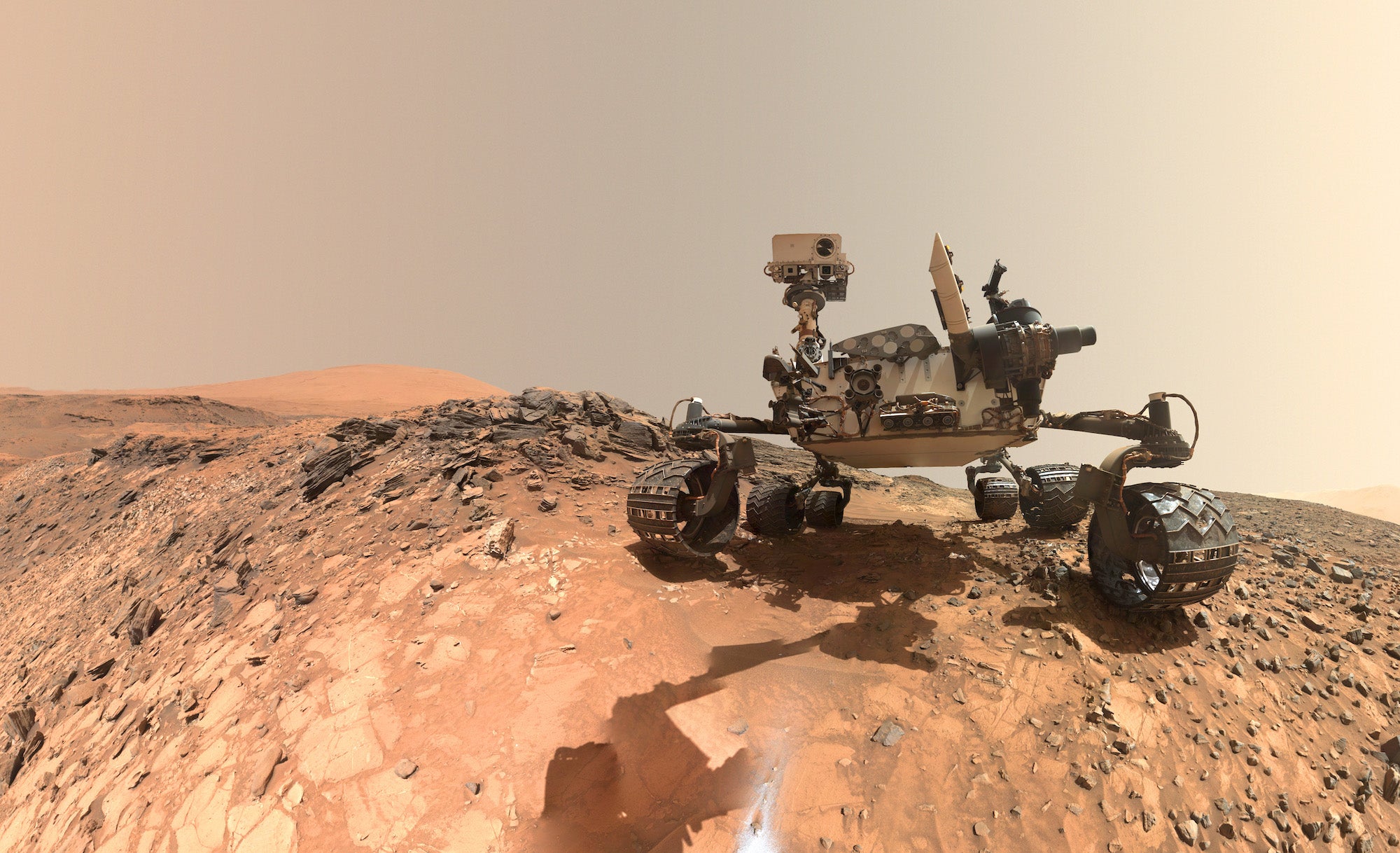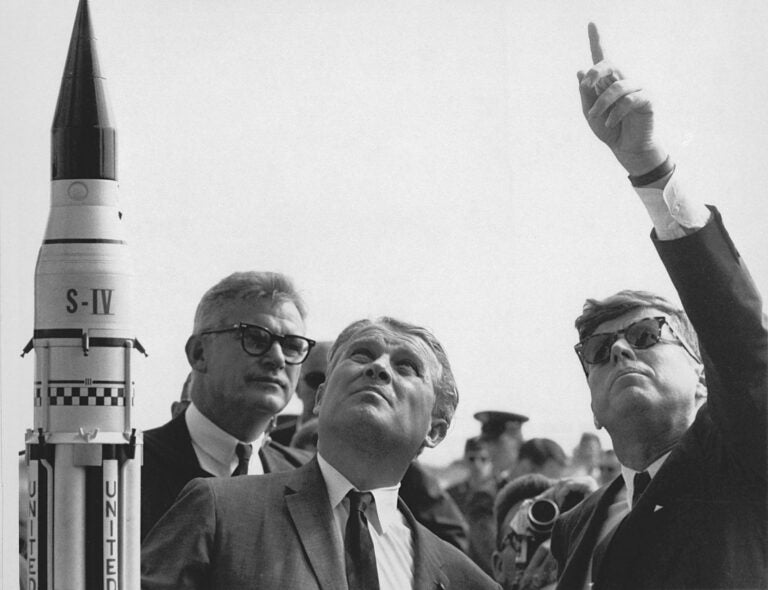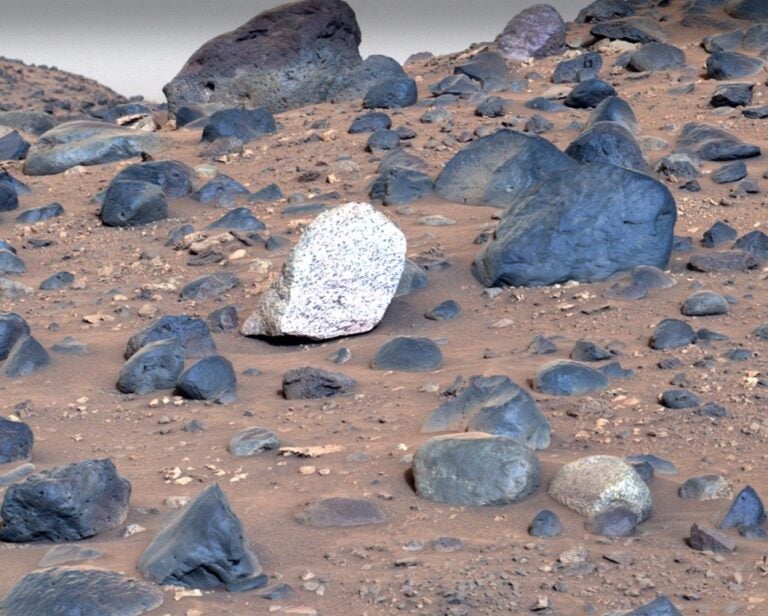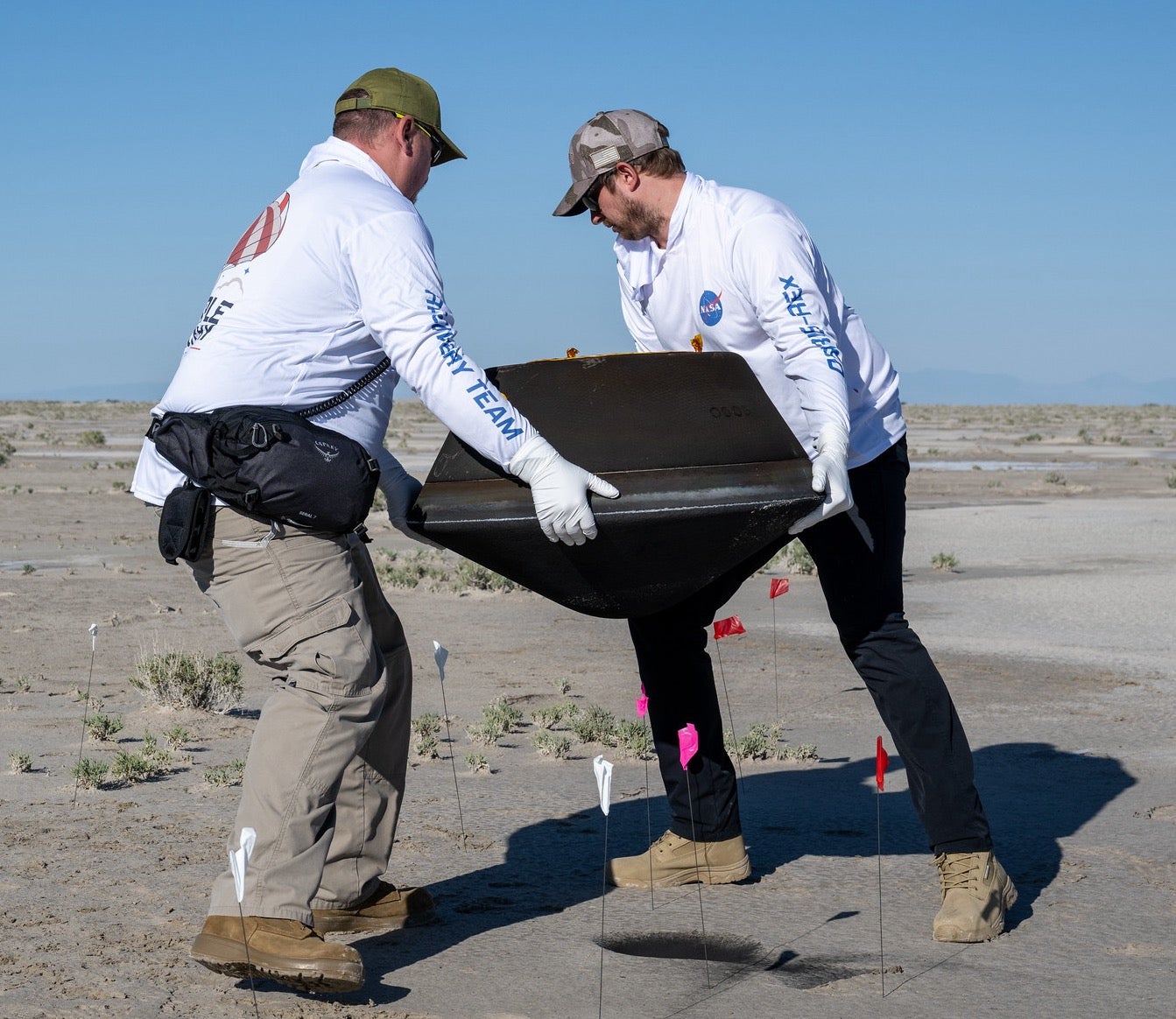
When Curiosity takes a selfie, where is the shaft that holds the camera? It is never seen, like the camera was placed on a tripod and a timer set. Was it edited out?
Bob Found
Indian Harbour, Nova Scotia
To take a selfie (like the one on pages 24–25 in our September 2022 issue), Curiosity uses the Mars Hand Lens Imager (MAHLI) camera on its multijointed robotic arm. The technique is roughly the same as when a human takes a selfie: Curiosity holds out its arm to snap the pic.
There are two reasons why the arm holding the camera is never seen. First, think about how you take a selfie with a phone: You do exactly as the rover does, holding the camera out with your arm extended. Your arm doesn’t appear in the selfie because it is outside the view of the lens (below or behind it). Similarly, in many cases Curiosity’s arm is outside the field of view of the lens.
Admittedly, it’s a bit more complicated for a rover to take a selfie than for a human, and this introduces the second reason why the arm is not visible. For us humans, selfies are a one-step process: Snap a pic and we’re done. But Curiosity’s camera can’t capture the entire rover in a single shot, even from the end of its 7-foot-long (2.1 meters) arm. Instead, the rover must take dozens of photos to fit its entire body and background into the view. (This process can take an hour or more!)
To do so, the arm moves around the rover to snap images from many angles. In some of these raw shots, small portions of the arm may be visible due to the angle of the photo. However, the rover takes so many images that when NASA staff on Earth stitch them together into a final, single selfie, they can choose to use only portions of the images that do not include the arm. So yes, in cases where bits of the arm might appear in the image, it has been selectively edited out of the final result.
Alison Klesman
Senior Editor









